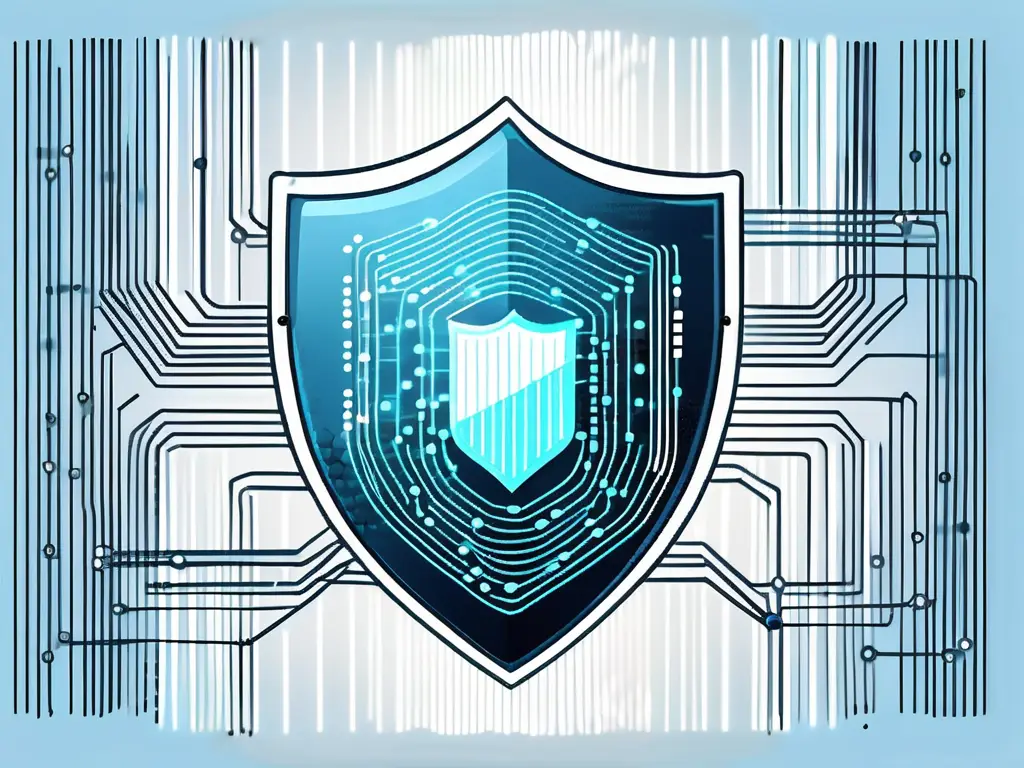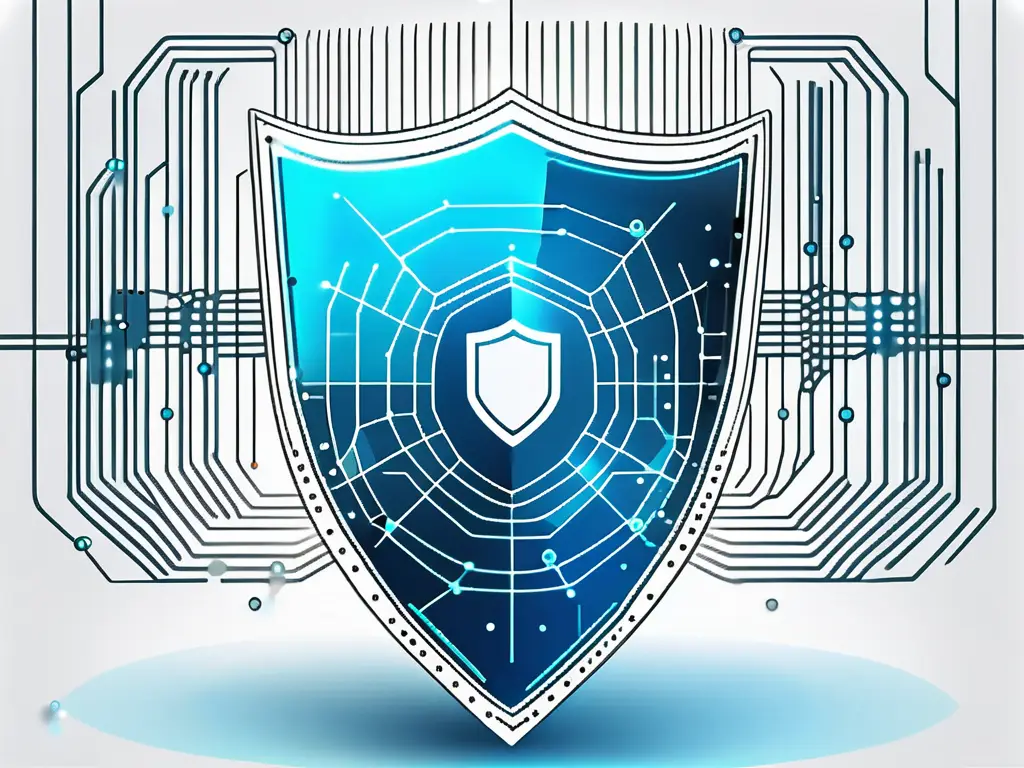Do you ever wonder how organizations protect themselves from cyber threats? How do they fortify their digital defenses and safeguard their sensitive information? Well, it all comes down to something called cybersecurity posture. In this article, we’ll take a deep dive into cybersecurity posture and uncover its key components, the role of risk management, how to evaluate and improve your posture, and even explore what the future holds for this ever-evolving field.
Understanding Cybersecurity Posture
Before we delve into the nitty-gritty details, let’s establish a solid understanding of cybersecurity posture. It refers to an organization’s overall approach to protecting its digital assets and encompasses various factors, including policies, procedures, technologies, and people.

Definition and Importance of Cybersecurity Posture
So, what exactly do we mean by cybersecurity posture? Well, think of it as the collective strength of an organization’s cybersecurity defenses. It’s how an organization prepares, prevents, and responds to cyber threats. A robust cybersecurity posture is vital in today’s interconnected world, where the number and complexity of cyber attacks continue to rise.
A robust cybersecurity posture helps mitigate risks and instills confidence in customers, partners, and stakeholders. It demonstrates that an organization takes data protection seriously and has implemented measures to safeguard critical information.
Components of a Strong Cybersecurity Posture
One vital component is a well-defined security policy. This document outlines the organization’s approach to security, including acceptable use policies, incident response procedures, and data protection guidelines.
Another critical aspect is the implementation of robust access controls. This includes user authentication protocols, role-based access controls, and encryption technologies to ensure that only authorized individuals can access sensitive data.
A solid cybersecurity posture involves regular employee training and awareness programs. Educating staff about the latest phishing techniques, social engineering tactics, and best cybersecurity practices can reduce the risk of successful attacks.
Additionally, organizations must proactively monitor their network, looking for signs of suspicious activity. Intrusion detection systems, firewalls, and advanced threat intelligence tools aid in identifying and mitigating potential threats.
Organizations should consider implementing a strong incident response plan. This plan should outline the steps during a cyber attack, including communication protocols, containment strategies, and recovery procedures. Regular testing and updating of the plan are essential to ensure its effectiveness.
Lastly, having a comprehensive incident response plan is crucial. It ensures that the organization can respond swiftly and effectively in the event of a cyber attack, minimizing any potential damage.
The Role of Risk Management in Cybersecurity Posture
Understanding the dynamic nature of cyber threats is crucial in developing an effective risk management strategy. Cyber threats can range from ransomware attacks that encrypt critical data to phishing emails that trick employees into divulging sensitive information. By staying informed about the latest cyber threats and trends, organizations can better anticipate and prepare for potential risks.
Identifying Potential Threats
Cyber threats come in all shapes and sizes. Organizations must remain vigilant in identifying potential threats, from sophisticated malware to social engineering scams—regular risk assessments and penetration testing help to uncover vulnerabilities and areas of weakness that attackers could exploit.
Organizations should consider the insider threat factor, where employees or contractors with access to sensitive data may intentionally or unintentionally compromise security. Implementing user behavior analytics and access controls can help detect and prevent insider threats before they escalate.
Implementing Protective Measures
Once potential threats have been identified, organizations must take proactive steps to protect their systems and sensitive information. This includes deploying robust endpoint protection solutions, implementing secure coding practices, and applying regular security patches and updates.
Establishing strong network segmentation, implementing encryption, and utilizing secure communication channels are essential protective measures that organizations should consider.
It is also important for organizations to have an incident response plan in place to effectively manage and contain security breaches. Regularly testing this plan through simulated cyber attack scenarios can help ensure a timely and coordinated response during a real security incident.
Evaluating Your Cybersecurity Posture
Assessing cybersecurity posture is critical to maintaining a strong security stance in today’s digital landscape. By regularly evaluating the effectiveness of security measures, organizations can proactively identify vulnerabilities and mitigate potential risks before they escalate into security incidents.
Tools for Assessing Cybersecurity Posture
Various tools and frameworks are available to help organizations assess their cybersecurity posture. These tools enable organizations to evaluate their current security controls, identify gaps, and prioritize areas for improvement.
One widely used tool is Security Information and Event Management (SIEM) software, which collects and analyzes security data across an organization’s IT infrastructure. SIEM solutions provide real-time insights into security events, helping organizations promptly detect and respond to threats.
Popular frameworks include the NIST Cybersecurity Framework, ISO 27001, and the CIS Controls. These frameworks provide a structured approach to assessing and improving cybersecurity posture.
Interpreting Assessment Results
Once an assessment has been conducted, it’s crucial to interpret the results accurately. This involves analyzing the findings, identifying areas of weakness, and prioritizing remediation efforts based on risk and impact.
Effective interpretation of assessment results requires a deep understanding of the organization’s business objectives, regulatory requirements, and threat landscape. By aligning cybersecurity priorities with business goals, organizations can ensure that security investments are strategically directed toward protecting critical assets and data.
Improving Your Cybersecurity Posture
Best Practices for Strengthening Cybersecurity Posture
Implementing a strong cybersecurity posture requires a multifaceted approach. Here are some best practices to consider:
- Regularly update software and systems to prevent known vulnerabilities.
- Enforce strong password policies and implement multi-factor authentication.
- Encrypt sensitive data both at rest and in transit.
- Perform regular backups and test data restoration procedures.
- Establish incident response protocols and conduct regular drills.
Another crucial aspect of enhancing cybersecurity posture is to stay informed about emerging threats and evolving best practices. Cyber threats constantly change, and organizations must adapt their security measures to stay ahead of cybercriminals. Regularly attending cybersecurity conferences, subscribing to threat intelligence feeds, and participating in information-sharing forums can provide valuable insights into the latest cybersecurity trends.
Overcoming Common Cybersecurity Challenges
While improving cybersecurity posture is essential, it’s not without its challenges. Organizations often face budget constraints, resource limitations, and the ever-changing threat landscape. However, by prioritizing security investments, fostering a culture of security awareness, and staying updated on the latest threats, organizations can overcome these challenges and enhance their cybersecurity posture.
Additionally, collaborating with industry peers and engaging with cybersecurity experts can provide valuable support in overcoming common challenges. Sharing experiences and best practices with other organizations facing similar cybersecurity issues can offer fresh perspectives and innovative solutions. Building a network of trusted cybersecurity professionals can also help stay informed about emerging threats and industry trends, enabling organizations to address potential security risks proactively.
The Future of Cybersecurity Posture
As technology advances and cyber threats become increasingly sophisticated, the future of cybersecurity posture holds many exciting developments and challenges.

Emerging Trends in Cybersecurity
One of the emerging trends in cybersecurity posture is the adoption of artificial intelligence and machine learning. These technologies can potentially revolutionize threat detection and response by automating routine tasks, identifying patterns, and predicting future attacks.
Artificial intelligence (AI) and machine learning (ML) algorithms can analyze vast amounts of data in real time, enabling organizations to detect and respond to threats more efficiently. AI-powered cybersecurity systems can stay ahead of attackers by continuously learning from new threats and adapting their defenses.
Another significant trend in cybersecurity posture is the increasing importance of securing the Internet of Things (IoT) devices. With the rise of interconnected devices, organizations must consider the security implications of a vast network of smart devices.
Securing IoT ecosystems involves implementing robust access controls, encrypting data transmitted between devices, and regularly patching vulnerabilities. As the number of IoT devices continues to grow, organizations must prioritize the security of these interconnected systems to maintain a strong cybersecurity posture.
Preparing for Future Cyber Threats
The cybersecurity landscape constantly evolves, and organizations must stay one step ahead of emerging threats. This requires a proactive approach to cybersecurity posture involving continuous monitoring, threat intelligence, and collaboration.
Investing in threat intelligence platforms allows organizations to gather and analyze data on emerging threats. By understanding attackers’ tactics, techniques, and procedures, organizations can better prepare their defenses and proactively mitigate risks.
Threat hunting, another critical technique, involves actively searching for signs of compromise within an organization’s network. By combining advanced analytics, threat intelligence, and human expertise, organizations can identify and neutralize threats before they cause significant damage.
Collaboration and information sharing within the industry are crucial for preventing cyber threats. By sharing threat intelligence, best practices, and lessons learned, organizations can collectively strengthen their cybersecurity posture and protect against common vulnerabilities.
Conclusion
In conclusion, the future of cybersecurity posture is filled with exciting advancements and challenges. Adopting artificial intelligence and machine learning, along with securing the Internet of Things, will significantly enhance defenses against cyber threats.
By actively preparing for future cyber threats through investment in threat intelligence platforms, leveraging threat-hunting techniques, and fostering collaboration, organizations can adapt their cybersecurity posture to mitigate risk and protect their digital assets effectively.
Remember, maintaining a strong cybersecurity posture is an ongoing effort that requires continuous monitoring, updating, and adaptation. Embrace the challenges, adopt best practices, and stay curious about emerging trends to ensure your cybersecurity posture remains robust in the face of ever-evolving threats.
As the digital landscape evolves, so should your cybersecurity posture. Blue Goat Cyber stands ready to elevate your organization’s defenses with our comprehensive suite of B2B cybersecurity services. Whether you’re concerned about medical device security, need thorough penetration testing, or require adherence to HIPAA and FDA regulations, our veteran-owned team has the expertise and experience to tailor a proactive security strategy for your business. Don’t let the complexity of cyber threats overwhelm you. Contact us today for cybersecurity help, and partner with us to transform your cybersecurity challenges into opportunities for growth and resilience. Your peace of mind is our mission.


